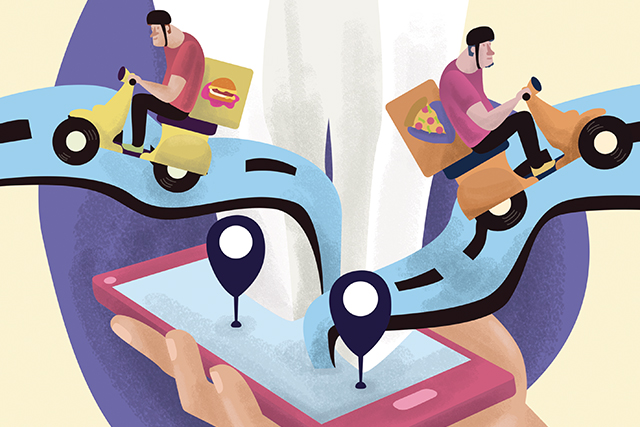Could anyone have predicted that Uber would face multiple labor-related lawsuits? It seems ages ago since the ridesharing company was hailed as an innovator for changing the transportation industry.
In the past few years, Uber has become better known for facing trials regarding the problematic nature of independent contraction. Because while the company can be credited for pioneering a niche segment in the online marketplace, it’s possible that the core of its significance has little to do with this achievement or with its brand of hyperconvenient service.
The key lies instead with its unique employment model: one that uses technology to leverage personal assets without the usual labor costs. In the labor market, what this represents is a change in the structure of employment.
Granted, the existence of part-time jobs and freelance work precedes the digital revolution—what Uber’s employment model has redefined is not the rules of regular employment per se but those of traditional shift-work industries. Suddenly, it was possible to cultivate a career while taking on a side hustle; for some, these side hustles became careers.
This shift in the way the public thought about jobs has contributed to the rise of the so-called gig economy, where shift-based jobs (hence the word “gig”) are becoming as prevalent as full-time ones.
The Uberization of the restaurant industry
Predictably, the gig model of employment—or the Uberization of labor as it is sometimes referred to—continues to expand exponentially, crossing over to fields outside of, but are dependent on, the transportation industry. The local food scene is a prime example here, with the growing popularity of online delivery services such as FoodPanda, Lalamove, Honestbee, and Delivery Guy.
GrabFood is the latest food delivery app that was launched, having gone through beta testing in June and officially starting operations over a month ago; as of writing, the company has contracted about 4,000 restaurants to sign onto its platform.
These developments mean nothing but good news to diners: With easier access to countless food concepts, dining is becoming increasingly independent of location and time constrictions. But what does the gig economy mean for restaurants? Increased accessibility can generate more activity for and boost the revenue of food businesses—but considering the fact that up to 40 percent of a contracted restaurant’s food delivery profit can go to third-party platforms and couriers, it becomes hard to tell whether or not the growing popularity of delivery apps and the gig economy in general means good news to partner-restaurants.
For one, allotting a portion of profit to a delivery platform represents not only a reduction in a restaurant’s earnings but also a budget cut—that is, money that could’ve been allotted to rent or labor ends up in the hands of a third-party platform.
The reality here is that the gig economy, despite affording workers the kind of freedom and work advantages any Filipino would be lucky to come across, puts well-meaning people in a position that makes them easier targets for exploitation.
To be fair though, the food industry has long ceased to be comprised solely of brick and mortars: Alternative dining setups such as home-based food businesses aren’t burdened by the same operating costs and thus can benefit from these delivery platforms without facing tradeoffs.
At the very least, what these apps have done for business is free aspiring food entrepreneurs from the usual costs and logistical concerns of opening and running a restaurant. It’s this elimination of costs, of those relating to labor in particular, that’s at the heart of the gig economy. And so what of the couriers, the people doing the deliveries—the gig workers themselves? What is it like to be part of a labor force that, technically, answers to nobody but a mobile app?
Freedom at what cost?
Gig workers or independent contractors are entitled to certain liberties that are absent in regular employment, perhaps most notable of which is complete autonomy over their schedules. They also have some control over their salaries, given that they can boost compensation by simply taking on more gigs. The standard rates vary per delivery platform, but presumably, they fall somewhere in the range of what Foodpanda offers its workers: P227 per day plus a bonus of P36 for every successful delivery. Excluding tips, a courier that works a 25-day month can earn a gross amount of almost P20,000.
In this sense, gig work can be gainful employment. But as with any technologically-induced paradigm shift, the Uberization of labor and the gig economy have serious drawbacks. Unlike regular employees, gig workers don’t receive benefits such as social security, health insurance, paid holidays, and leave benefits. Couriers—or riders, as they’re more commonly known—have to shoulder expenditures such as gas and maintenance. The absence of insurance practically means that they’re obligated to assume liability in case of automotive accidents. All this points to why gig employers possess the upper hand in this setup: By being free from the financial and institutional burdens that corporations are obligated to internalize in a regular employment setup, the on-the-job risks of gig work are effectively transferred from employers to riders, thereby weakening labor protection and driving down income.

The reality here is that the Uberization of labor, despite affording workers the kind of freedom and work advantages any Filipino would be lucky to come across, puts well-meaning people in a position that makes them easier targets for exploitation. And this all has a lot to do with an employment model that has, by virtue of an ostensible freedom, been exempted from the rules of labor regulation. Because what exactly are riders if they’re not part-time workers, freelancers, or regular employees?
Finding recourse in the gig economy
To better understand the impact of ambiguous labels in the context of labor, it is beneficial to study the current state of fast food work in the country. As of late, many establishments including some of the Philippines’ major names in the food industry have been guilty of labor-only contracting and contractualization.
Also, according to the Philippine Statistics Authority’s biennial Integrated Survey on Labor and Employment, the foodservice industry has a share of about six percent in the 54 percent of the estimated 31,277 establishments that hire through manning agencies (contacted workers are vulnerable to end of contract or endo).
By being free from the financial and institutional burdens that corporations are obligated to internalize in a regular employment setup, the on-the-job risks of gig work are effectively transferred from employers to riders, thereby weakening labor protection and driving down income.
These systems have been serious points of controversy for good reason: They are direct ways of flouting the rules of regular employment—a system that affords employees rights and benefits. Put simply, they let corporations maximize profit at the expense of workers. Cost minimization remains to be the number one reason as to why basic human decency (i.e., regularization) continues to elude these corporations, which is a shame for many reasons including the fact that the costs of regularization aren’t exactly as high as the number of establishments that engage in contractualization leads us to believe.
In a way, this fraught state of employer-employee relations in the country resembles the Uberization of labor, except for the latter, there technically isn’t an employer to speak of; there’s no one to hold accountable should the employees’ lives are put in danger. The fight for decent work conditions and fair, consistent labor regulation continues, but right now this is the status quo: a place where freedom and convenience at the expense of work benefits and safety is particularly appealing.
Originally published in F&B Report Vol. 15 No. 6





